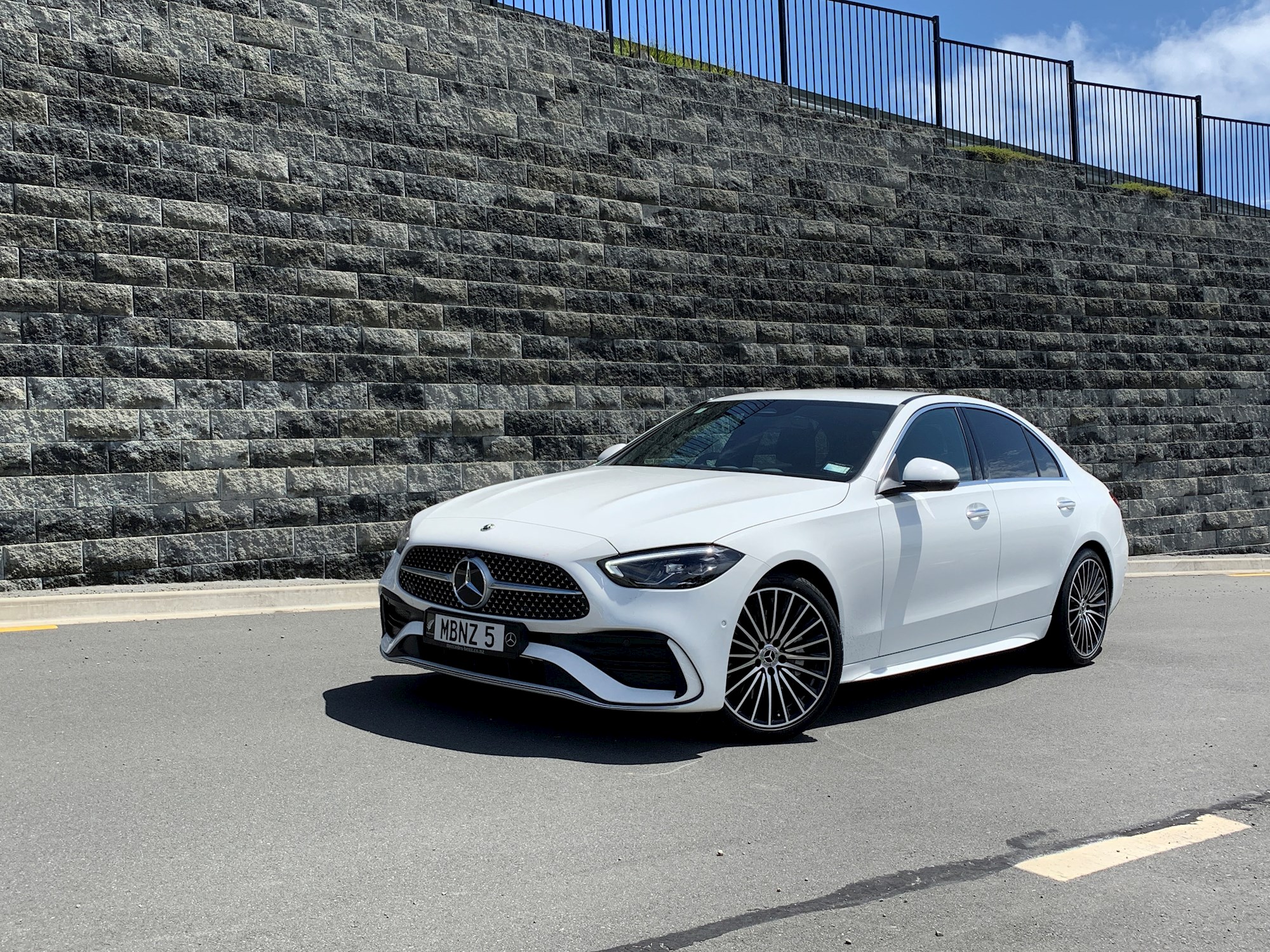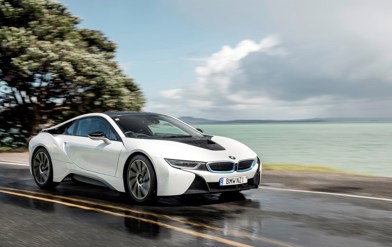As popular as it was for New Zealand buyers, we’re a little saddened to see the new 2022 Mercedes-Benz C-Class no longer includes the hulking, sonorous V8 option. That’s old news, reported a year ago but it always hurts when reality hits.
No need to fret, we’re told, because the new C63 AMG will use a hybrid, electric turbo four-cylinder with AWD and prove much faster than the V8. We shall see, possibly later this year.

For now, the big news in NZ is the arrival of the C200 and C300 rear-drive, mild hybrid four-cylinder sedans. In a world of SUVs, the sedan still has a place, and some strong history.
With more than 10.5 million sold in more than 100 countries since 1993 over three generations, more than 2.5 million of those were the outgoing W205 model. And it was also the best-selling Mercedes for seven of the last ten years. So it’s still a very important model for Merc, and sits in its top-three portfolio.
The new W206 models represent a lot of value, and three key marketing points of developing a larger design, following modern luxury and using sustainable practices.
Two engines are offered: a 1.5-litre for the C200 and a 2.0-litre four-cylinder for the C300, but Mercedes expects the C200 to take around 80 percent of sales. We would, too.
Both launch models use a 48 volt mild hybrid system to provide a boost in power, up to 15kW and 200Nm, while also helping save fuel. On top of that, there’s also an overboost of 20kW available. Both engines flow through a nine-speed auto and rear-wheel drive, with sharper steering and four-wheel steering: opposed steering at low speeds and parallel above 60km/h, offering both a tight 10.6m turning circle and improved (but virtually imperceptible) agility on the go.
Visually there’s a mix of size and style: it’s a little longer, wider and taller than previous, offering more rear legroom and more front shoulder and head room, shorter overhangs front and rear, signature ‘power domes’ and a slightly more rear cab emphasis the shoulder lines. Minor details reward those with a little more focus, like the miniature three-pointed star diamond grille design that’s subtle enough not to be too gauche.

Seven colours are offered, three of them new, including the hero Spectral Blue, but all feature the AMG line exterior package to avoid any undesirable entry level appearance, along with S-Class touches throughout. Inside, the dash is divided into upper and lower sections, with a large 11.9 inch semi-floating centre portrait screen that is very slightly angled towards the driver, along with the latest MBUX 12.3 LCD instrument screen. In true Mercedes MBUX style, it’s all very customisable and for its range of functions, rather user-friendly, including a fingerprint scanner to log in to a profile, for personalised settings and behavior-based predictions.
Optional augmented reality navigation, from the S-Class, offers street signs and turn signals, house numbers and street names. Of not option, there’s still wireless charging Apple CarPlay/Android Auto.
The C200 is quite well stocked, with a big boost to the standard equipment level, including Distronic radar cruise control, active steering assist, keyless entry/start, 10 airbags, 360 degree camera and improved assistance on country roads and lane centering on motorways. Traffic sign assist can also recognise roadworks and overhead gantries, and ‘when wet’ signs, plus stop sign and red light warnings, and live traffic updates – all very clever. The steering wheel buttons are good, but the slider volume control isn’t always your best friend. The Hey Mercedes voice control, however, often is.
There’s also the Mercedes Me smartphone app which accesses a lot of handy info about the car and becomes an integral tool of ownership.

In fact the C200 is so well equipped, the C300 doesn’t have a huge amount more: standard 19-inch AMG alloys, tinted rear glass and the Driver Assistance Package with semi-autonomous tech as standard are a few key reasons, though it does highlight the value of the $86,000 C200, over the $102,900 C300.
Sampling each model over two days in Northland near Kerikeri, the driving dynamics are remarkably similar, which again puts the spotlight on the C200. Sure, the C300 is quicker thanks to 25 percent more engine capacity, but the C200 is still swift, remarkably so and a credit to the acceleration and speed and economy that Mercedes has drawn from a 1.5 litre; it’s not difficult to perceive the 1.5 as a 2.0.
The C300 does offer more, of course and it’s arguably more engaging and dynamic with more mid-range and a larger spread of more power and torque on tap, but as the world moves greener and smaller, the C200 appears to be the one with a brighter future.

One standout is the ride and handling. True, in part that’s simply because it’s a sedan in an increasing world of SUVs, so there’s inherent advantages, but the C-Class possesses outstanding ride quality and handling that’s as comforting as an old friend: over small lumps and bumps, the absorption and ride quality is sublime, soaking up the rough stuff and virtually isolating it from the cabin; and it backs it up with sure, safe, solid sedan handling, which is inherently more planted than an SUV and many sedans for that matter. It’s set up on normal springs, but for those who must, there’s also optional continuously adjustable damping.
Of course the V8 is indeed still available in the Mercedes-AMG C63 Coupe, and other models, but with the new C350e PHEV due later this year, along with the C63 due in NZ next year, the new C200/C300 twins have all the offerings to rekindle our love for the sedan.














